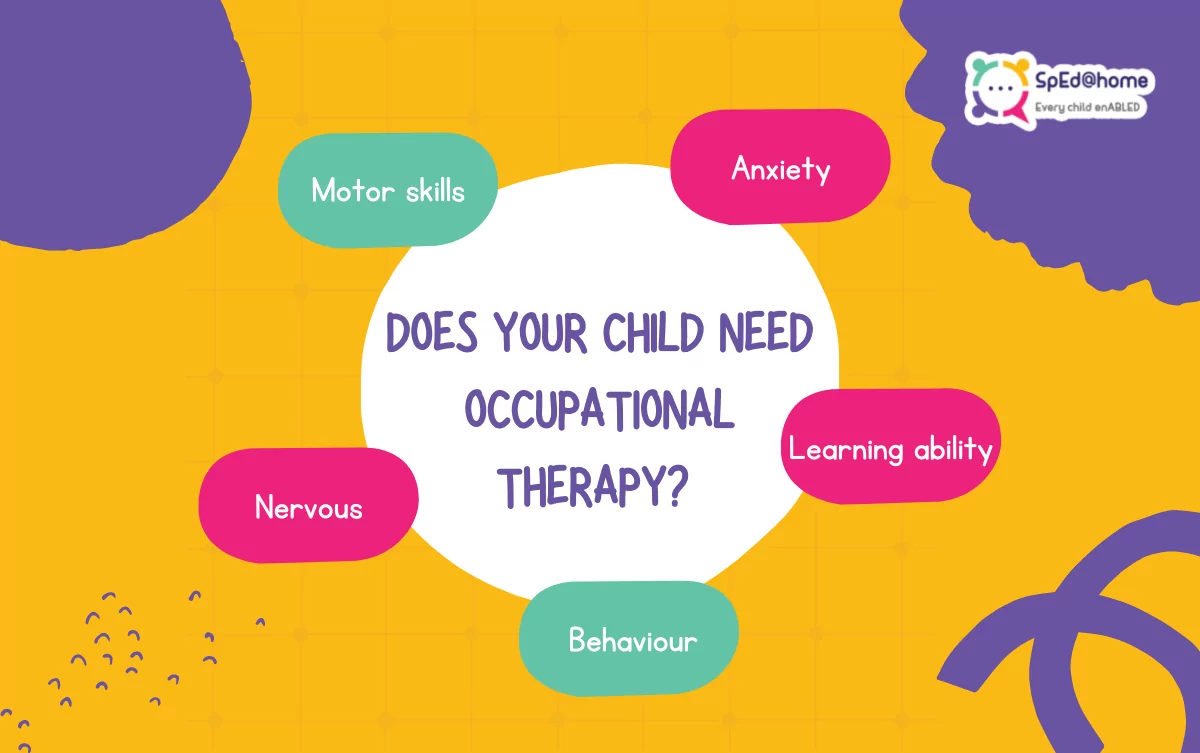Occupational Therapy Assessment: Building Skills for Everyday Life
Some children face challenges in daily tasks, fine motor skills, or sensory processing that affect their independence and confidence. An occupational therapy assessment helps identify these challenges and creates a plan to strengthen essential skills for learning, play, and self-care.
What is an Occupational Therapy Assessment?
An occupational therapy (OT) assessment is a detailed evaluation conducted by a licensed occupational therapist. It focuses on a child’s ability to perform everyday activities, including:
- Self-care tasks like dressing, eating, and grooming
- Fine motor skills such as writing, drawing, or using scissors
- Gross motor coordination for running, jumping, or balance
- Sensory processing and regulation skills
The goal is to understand the child’s strengths and challenges to design interventions that improve independence and confidence.
Why is it Important?
Children with difficulties in motor skills or sensory processing may experience:
- Frustration in school activities or play
- Poor handwriting or difficulty with schoolwork
- Trouble following instructions or maintaining focus
- Avoidance of tasks requiring coordination or fine motor skills
An occupational therapy assessment identifies areas that need support and provides practical strategies for home and school environments.
Signs Your Child May Need an OT Assessment
Parents might consider an occupational therapy assessment if a child:
- Struggles with dressing, feeding, or using utensils
- Has messy or illegible handwriting
- Shows clumsiness or difficulty with coordination
- Avoids sensory experiences like textures, sounds, or movement
- Gets easily frustrated with daily tasks
Early identification helps children develop the skills they need to succeed and enjoy independence.
How the Assessment Works
- Parent interview – Gathering information about the child’s daily routines, challenges, and strengths.
- Observation and task performance – Watching the child complete everyday activities and fine/gross motor tasks.
- Standardized tests – Measuring coordination, strength, balance, and sensory processing.
- Report and recommendations – Outlining interventions, therapy exercises, and home strategies.
Benefits of Occupational Therapy Assessment
- Targeted interventions for motor skills, sensory integration, and daily living activities
- Improved independence in school and at home
- Enhanced focus and attention through sensory and motor strategies
- Confidence boost as children learn to manage tasks successfully
- Support for parents and teachers with practical guidance and activities
Implementing the Results
After assessment, occupational therapists may recommend:
- Hands-on therapy sessions to improve motor skills
- Sensory exercises to regulate responses to stimuli
- Adaptive tools or techniques for schoolwork and daily tasks
- Home practice activities to reinforce skills
With consistent support, children develop essential life skills that enable them to thrive academically, socially, and personally.
Final Thoughts
An occupational therapy assessment is more than a test—it’s a roadmap for helping children achieve independence and confidence. By understanding motor, sensory, and daily living challenges, parents and therapists can create personalized plans that empower children to succeed in school, play, and life.


